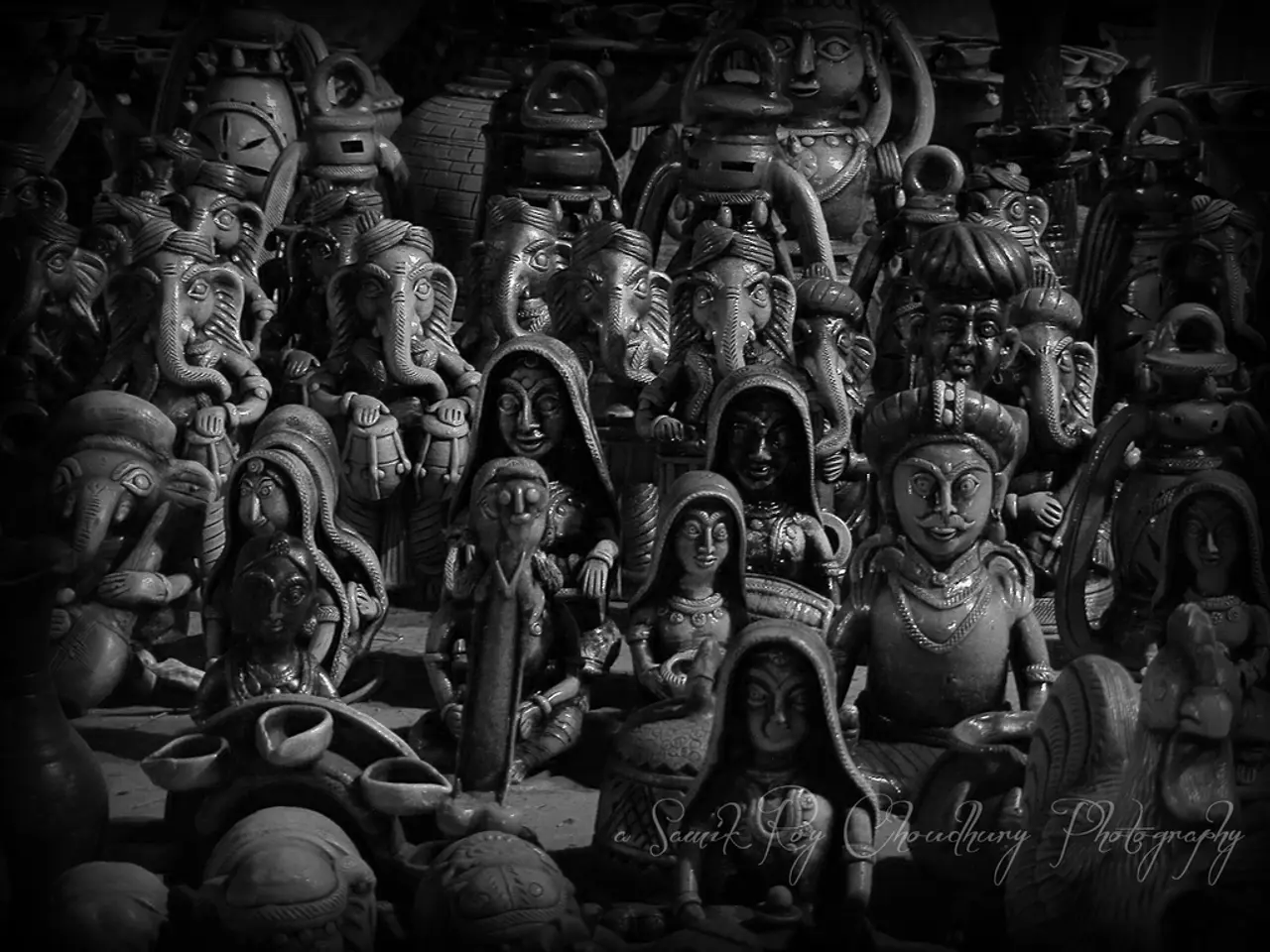Ganesh Festival 2025: Exploring Ganesha's Various Manifestations - Delving into the myriad forms of Lord Ganesha
In the rich tapestry of Hindu mythology, one deity stands out for his endearing charm and universal appeal - Lord Ganesha. Dr. Madhukar Dhavalikar, an esteemed archaeologist, delves into the deity's origins and worship across Asia in his book, "Shri Ganesh: Asia's Adorable Deity."
The significance of Ganesha began to grow during the Gupta period, around the 4th to 6th centuries CE. By this time, Ganesha had evolved into a four-armed deity, typically holding a modakpot, broken tusk, goad, and hatchet. This iconic depiction of Ganesha has remained largely unchanged for centuries.
However, the origins of Ganesha remain a subject of debate among scholars. Pandit Mahadev Shastri Joshi, in his book "Bharata's Murtikala," acknowledges the lack of consensus regarding Ganesha's origin and development. Some believe that Ganesha originated from non-Aryan tribes who worshipped elephants as their gods.
The oldest known stone sculpture of Ganesha dates back to the Kushan period, from the 1st-2nd centuries CE, providing a glimpse into the ancient worship of this beloved deity. The Brihatsamhita of Varahamihira, a significant astronomical text from the 6th century CE, also offers insights into the creation of Ganesha idols.
While Ganesha is a principal deity in the Shiva pantheon and is part of the Panchayatan, his female counterpart, Vinayaki, is far less common. Vinayaki is revered as the feminine form of Ganesha, with her origins ancient and linked to Puranic texts and Yogini and Tantric traditions.
Despite her significance, written descriptions of the correct depiction of the Vinayaki statue are scarce. Such descriptions are typically found in specialized texts on Hindu iconography or religious art treatises rather than commercial listings or general statue descriptions. Vinayaki's worship and idols are far less common compared to Ganesha's.
In conclusion, the origins and evolution of Ganesha and Vinayaki remain fascinating subjects for scholars and devotees alike. As we continue to explore and understand the rich history and symbolism behind these deities, we deepen our appreciation for the diversity and depth of Hindu mythology.




